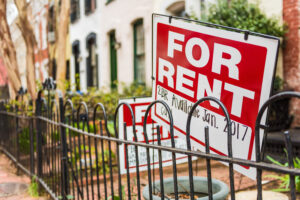Federal and state prisons are considering granting susceptible inmates early release in an effort to avoid major coronavirus outbreaks – and some already have. While many U.S. states were at the forefront of releasing nonviolent (often older) inmates early, the U.S. Attorney General issued his own order last Friday granting those eligible the option of home confinement.
But who will house these vulnerable federal prisoners? And how will state-wide early prison releases will affect the rental housing industry, leasing policies, and criminal background screening in the future?
While the industry’s future might seem like an uncertain, complex, legal-ridden mess, we’re here to help shed some light during potentially the darkest timeline.
The Federal Response: Home Confinement
On April 3rd, 2020, Attorney General Bill Barr ordered federal prison officials to prioritize releasing vulnerable inmates at facilities struggling to contain outbreaks of coronavirus. On the federal level, this presently speeds up the process in complexes in Danbury, Connecticut; Oakdale, Louisiana; and Elkton, Ohio. However, the migration to home confinement will increase as other facilities are impacted by the pandemic.
The Federal Bureau of Prisons’ (BOP) update on April 5th reports that home confinement has already increased “by over 40% since March” and the Attorney General’s emergency order will only further increase these numbers.
With this initiative, the criteria in which inmates are considered for home confinement have also changed. According to Politico, federal prisoners were previously eligible for home confinement after they completed 90% of their sentences, but AG Barr’s memo pushes for earlier releases.
In late March, the AG issued guidance detailing a non-exhaustive list of factors to consider when assessing which inmates should be granted home confinement during the pandemic. These factors are:
How vulnerable the inmate is to the virus
The age and vulnerability of the inmate to COVID-19, in accordance with the Centers for Disease Control and Prevention (CDC) Guidelines.
How much security the inmate requires
The security level of the facility currently holding the inmate, with priority given to inmates residing in low and minimum-security facilities.
Violations and violent/gang-related activities in prison
The inmate’s conduct in prison, with inmates who have engaged in violent or gang-related activity in prison or who have incurred a BOP violation within the last year not receiving priority treatment under the Memorandum.
The inmate’s PATTERN score
The inmate’s score under PATTERN (the Prisoner Assessment Tool Targeting Estimated Risk and Needs, developed by the US Department of Justice after the First Step Act of 2018), with inmates who have anything above a minimum score not receiving priority treatment under the Memorandum.
Risk of repeat offenses and public safety conditions
Whether the inmate has a demonstrated and verifiable re-entry plan that will prevent recidivism and maximize public safety, including verification that the conditions under which the inmate would be confined upon release would present a lower risk of contracting COVID-19 than the inmate would face in their BOP facility.
The inmate's conviction
The inmate’s crime of conviction, and assessment of the danger posed by the inmate to the community. Some convictions, such as those involving sex offenses, will render an inmate ineligible for home detention. Other serious offenses should weigh more heavily against consideration for home confinement.
Before transferring to home confinement, granted inmates will be placed in mandatory 14-day quarantine. The March memo originally subjected those released to location monitoring services and (if ordered by the court) subject to supervised release, but AG Barr has recently authorized the BOP to “transfer inmates to home confinement even if electronic monitoring is not available, so long as the BOP determines… that doing so is appropriate and consistent with our obligation to protect public safety.”
It’s safe to say, this influx of home confinement will likely have a big impact on the rental housing industry. Both during the pandemic, but after it as well.
The BOP shows there are 174,837 people in federal custody, but out of the roughly 2 million incarcerated in the U.S. most are incarcerated in state prisons and local jails. As local governments grant inmates early release, it’s important to understand that the factors that make an inmate eligible for release are changing every day and vary from state-to-state.
Releases Are Happening on the State Level Too
Since March, local and state governments have argued and battled over whether to release prisoners early in fear of a coronavirus outbreak. While Arizona’s Governor Doug Ducey has flat-out said no, other states have gone back and forth on who would be eligible and how many prisoners would be enough to skirt a potential health crisis. Some have already granted inmates early release.
Below are a few of the states and cities we’re watching. Be sure to subscribe to get updates on this situation as it unfolds.
New Jersey’s Chief Justice, Stuart Rabner signed an order allowing the release of as many as 1,000 people serving in county jails. This order will apply to inmates jailed for probation violations and those convicted in municipal courts or sentenced for low-level crimes in Superior Court.
On April 7, 2020 Governor Mike DeWine announced plans to release inmates in state prisons who are older, sicker, or closer to release. 141 inmates who were set to be released within 90 days might be allowed to early release. 26 inmates older than 60 with chronic health conditions who have served at least half of their sentences might also be eligible for early release. The governor has also asked to waive the 60-day waiting period before sending to parole. Previously, DeWine asked judges to consider 23 women who are pregnant or in prison with an infant and 15 prisoners over 60 years old with 120 days or less before the end of their sentence for early release.
In addition to the governor’s plans, county judges have been trying to reduce inmate populations by releasing nonviolent offenders, ordering police to issue citations rather than making arrests, and aiming towards plea deals.
Governor Gavin Newsom issued an executive order in March directing the California Department of Corrections and Rehabilitation (CDCR) Secretary to halt the intake and/or transfer of inmates and youth. It also directs the Board of Parole Hearings to create a process to conduct all scheduled parole suitability hearings through videoconferencing. According to the San Francisco Chronicle, so far this fast tracked approach has led to the release of about 3,500 people serving sentences for nonviolent offenses who were due to be paroled in the next 60 days.
The California Judicial Council unanimously voted to implement 11 temporary emergency rules, including setting bail statewide at $0 for misdemeanors and lower-level felonies. They also suspended the entry of defaults in eviction cases and suspended judicial foreclosures.
Executive Order D 2020 016 allows the Colorado Department of Corrections (CDC) to temporarily limit the number of prisoners it accepts, keeping offenders in pre-transfer facilities. It suspends the caps and criteria on awarding “earned time credits” to reduce the current inmate population. The CDC can refer inmates to a “special needs parole” program.
Governor Gretchen Whitmer signed Executive Order 2020-29, which identifies those potentially eligible for early release from jails or local lockups including those who are aging or with chronic conditions, pregnant women or people nearing their release date, and anyone incarcerated for a traffic violation and failure to appear/failure to pay.
Governor Greg Abbott made an executive order barring inmates who are accused or previously convicted of violent crimes from being released from jails without paying bail. However, the Texas Tribune reports that Harris County’s misdemeanor judges aren’t abiding by the executive order and are following a federal court’s orders for bail decisions. This allows for the automatic release of most misdemeanor defendants without collecting bail.
Alaskan police are under temporary orders to avoid jailing anyone for misdemeanor charges (with exception of domestic violence or stalking). Inmates are also able to request a bail hearing due to coronavirus concerns. An order signed on March 27 now sets a temporary bail schedule for misdemeanor crimes – allowing anyone charged with a misdemeanor (other than the above exceptions) to be released on their own recognizance. A second order overturns earlier trial court decisions and allows judges to consider the pandemic when considering release.
Mayor Bill de Blasio announced that over 650 New York City inmates have been released. Those eligible for release are city inmates convicted of misdemeanors and nonviolent felonies with less than 1 year left in their sentence. Inmates with domestic violence or sexual offense charges were not released.
What Does This Mean for the Rental Housing Industry?
Like with everything over the past few weeks, the future is filled with uncertainty. The pandemic has brought evictions to a grinding halt, nosedived the economy, required renters to self-quarantine, reduced rental payments, and threatened the lives of many. Those incarcerated included. Federal and state prison releases will complicate things.
ApplyConnect has made it our mission to become an authority on this topic in order to keep you informed and prepared for how to safely and confidently work with applicants and background checks in the future. We’ll try to tackle your burning questions regarding federal home confinement and what that looks like in a rental housing context – including your rights. You can expect to see us discuss the potential long-term effects releases might have on the leasing process and criminal screening. And, we’ll keep you up-to-date on any other state prison directives and potential legislation.










4 Replies to “What You Need to Know About Prison Home Confinements and Rental Housing”
So people that got approved parole why they have not released those individual yet that will help lowering the number in the state prison. And stop spreading the virus! So how do we address the issues with states prisons early released of parolee during the pandemic?
Michigan states need to release eligible people that got approved parole out as well as those who are sick or that is put a risk during the pandemic. Releasing those individual will help Michigan State prison MDOC LOWER THE POPULATION OF THESE PACK PRISON
Once the inmate is elgible for a home confinement release, does it matter whose name the lease is acquired in?? In oth words, does the lease need to be in the spouse’s name??
Hi Natasha,
Excellent question, and unfortunately this one may vary depending on your location. For example in Seattle not only can you not reference criminal information for rental applicants, but there are special protections for roommates added after a lease has been started that prevent additional background checks being performed. In other areas of the country it’s not a problem to have anyone added to the lease go through your vetting process. It’s best to check with your local laws and consult with a local attorney to be safe with this process.